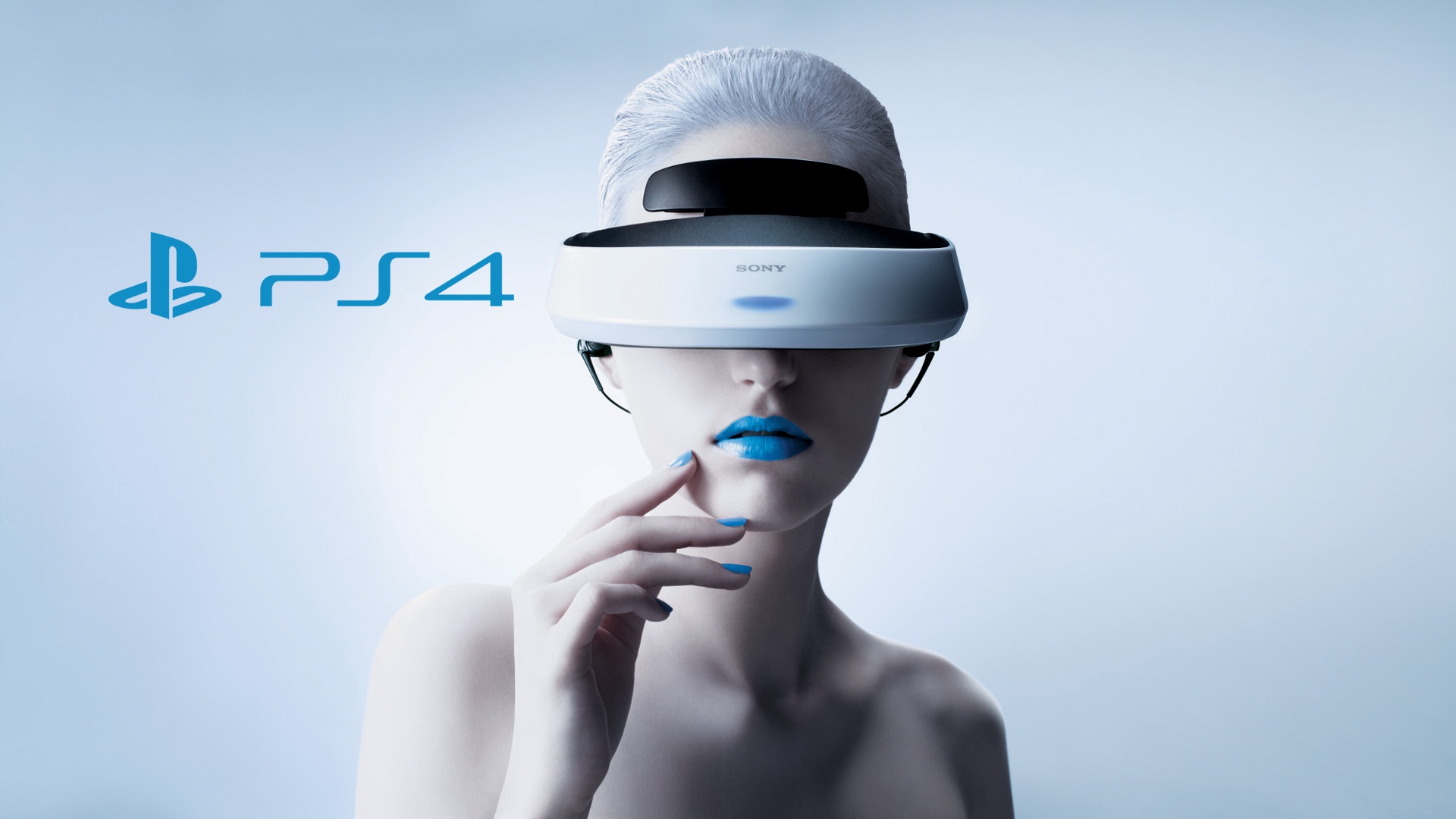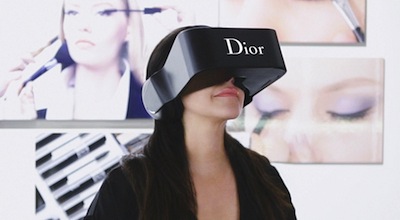
Digital
What’s The True Potential Of Virtual Reality For Luxury Brands?
by
Wayne Fletcher | February 01, 2016
2016 is set to catapult virtual reality into the mainstream. But can it truly be leveraged by luxury brands for maximum effect? Cream UK Strategy Director Wayne Fletcher investigates.
2016 is set to catapult virtual reality into the mainstream. But can it truly be leveraged by luxury brands for maximum effect? Cream UK Strategy Director Wayne Fletcher investigates.
This year, for the first time, virtual reality (VR) headsets won’t just be in the hands of a select group of developers – they’ll be owned by thousands, perhaps millions, of consumers around the world.
The Rift, from Facebook-owned Oculus, is already available for pre-order and the rival Vive, from HTC and Valve, has announced pre-orders will start on 29th February. Both will start distribution in the Spring. With Sony’s Playstation VR also set for release this year and available to millions of Playstation 4 owners, and Samsung Gear VR and Google Cardboard already on the market and adding new experiences all the time, awareness and uptake is set to explode.
“ There are broadly two types of headset-based VR – those that we’d class as ‘premium’ ”
But what opportunities does virtual reality present for luxury brands? Will VR investment prove to be a costly sideshow, or is it set to take a permanent centre stage in the marketing plans of luxury marketers?
Before we explore the potential of VR, let’s take a brief look at the different platforms, what they can do and how they differ.
There are broadly two types of headset-based VR – those that we’d class as ‘premium’, where the focus is on creating the most immersive experience possible, and those we’d class as ‘accessible’, where the quality of experience is traded for accessibility, that is, experiences that can be accessed by the widest possible audience.
“ These experiences won’t come cheap – part of the reason we’ve dubbed them ‘premium’ ”
In the premium category, we’d group Oculus, HTC Vive and Sony Playstation VR. All of these platforms offer a bespoke headset with a wide field of view (100-110 degrees – basically a measure of how extensive your ‘peripheral vision’ is with the headset) powered by hooking them up a to external hardware – in the case of Oculus and HTC, a high specification PC and in the case of Sony, a Playstation 4 console.
Things then start to differ by platform. For example, both Oculus and Vive have developed handheld sensors which allow your hands to accompany you into your virtual world – to manipulate objects, gesture etc – although the Oculus version won’t be available until later this year. Sony are promising something but it’s based on an old accessory and, by all accounts, doesn’t work terribly well yet.
Oculus and Playstation VR will be primarily ‘sit down’ experiences, with most movement in the virtual world controlled by a handheld controller. However, HTC’s Vive will allow for some actual physical movement (i.e. using your feet), albeit on a limited basis (15ft x 15ft)- as long as the laser-based motion sensors have been set up.

Sony’s Playstation VR is set for release this year
These experiences won’t come cheap – part of the reason we’ve dubbed them ‘premium’. Purchasing the headset, accessories and high spec PC required to drive Oculus’ Rift or HTC’s Vive isn’t going to leave much change from £1,500. Sony’s Playstation VR may have the greatest early traction simply because owners of the PS4 will only need to purchase the headset.
These premium experiences are mainly going to appeal to hardcore gamers with money in their pockets. They’ll be ideal for an in-store experience, where you’re providing the hardware, but you shouldn’t expect any VR content you create for these platforms to be reaching anything other than a niche audience.
The two main ‘accessible’ platforms are Samsung Gear VR and Google Cardboard . Both are designed to turn the user’s smartphone into a virtual reality viewer once it’s been inserted into a specially-designed headset.
“ Samsung’s Gear is more sophisticated. The headset holds the smartphone & also has its own built-in motion sensors ”
Samsung’s Gear is the more sophisticated of the two. The headset not only holds the smartphone, but also has its own built-in motion sensors – which the smartphone plugs into via USB – that are more sensitive than those built into Samsung’s handsets. It also has its own touchpad so users can interact with the virtual reality world.
Powered by Oculus VR, it offers many of the benefits of the premium experiences, although smartphone-driven platforms aren’t as optimised or as high a resolution viewing experience as those employing bespoke headsets.
However, it’s main drawback is the limited number of smartphones it works with – just the Samsung Galaxy Note 5, S6, S6 Edge and Edge+.
“ So far innovation in the field has been limited, although both Christian Dior and Tommy Hilfiger have dabbled ”
Google’s Cardboard is the most accessible solution of the lot. A range of ‘construct at home’ cardboard viewers – many of which are just that, made of cardboard – can be bought only for as little as £10. Then, all you need to do is download the cardboard app, download the cardboard compatible VR experience you want to enjoy, slot it into your cardboard viewer and off you go. It will work with any phone with a gyroscope (so head motions can be detected) although not every phone will be able to handle every VR app – some simply don’t have the required processing power.
So what opportunities does VR present to luxury brands? Well, so far innovation in the field has been limited. Both Christian Dior and Tommy Hilfiger have dabbled, with the aim of giving their customers an extra incentive to visit their stores.
So Dior developed Dior Eyes – it’s very own VR headset with built-in 3D sounds – and launched it in-stores last June with content that allowed viewers to explore behind the scenes at their ready-to-wear fashion shows.

Dior has dabbled in virtual reality, releasing its its own VR headset, called ‘Dior Eyes’
Tommy Hilfiger launched a Samsung Gear based experience which enabled visitors to their New York store to experience their Autumn Runway presentation as if they were ‘sitting front row at Manhattan’s Park Avenue.’ These sort of experiences add to the theatre and talkability of the retail experience, and give customers a reason to visit more often and dwell for longer.
NorthFace has also experimented with VR experiences, with the aim of enticing shoppers in-store but also promoting themselves more widely. NorthFace Korea produced an Oculus-based in-store VR experience which allowed shoppers to ‘virtually’ test their new outerwear by taking it on a virtual husky-drawn sled ride.
Last Spring, the brand also produced a Google Cardboard based immersive tour of California’s Yosemite National Park and the Moab desert in Utah, where customers could trek the landscapes and rock climb alongside athletes Cedar Wright and Sam Elias. The app was released on Google’s Playstore and was available to anyone with a cardboard headset and a compatible phone, although customers could also try it in-store.
“ VR can also be used to create ‘virtual stores’ which customers can visit from the comfort of their own homes ”
So VR can entice customers in-store but perhaps its greatest potential for luxury brands is to increase business from those who don’t have the time, or inclination, to visit a real world store.
For example, VR can be used to showcase virtual products. Potential customers could check out a virtual car without ever visiting a showroom, and perhaps use VR to customise it to their exact requirements and even take it for a test drive before they go ahead and order.
VR can also be used to create ‘virtual stores’ which customers can visit from the comfort of their own homes. Some have already experimented with this – luxury boutique The Apartment by the Line, for example.
“ In the future, we expect virtual stores which meld the realms of the real & of the imagination ”
At present, these experiments have involved filming the actual boutique with 360 cameras but re-creating the physical store virtually is only scratching the surface of what can be done. In the future, we expect virtual stores which meld the realms of the real and of the imagination to truly immerse the customer in the world of that luxury brand, creating experiences which are genuinely exciting and potentially better than the physical store experience it aims to replace.
The ramifications are game-changing. Should ‘v-commerce’ take off, it will enable luxury brands to widen their distribution without the need to necessarily invest in expensive store networks. Of course, much of the potential of VR for luxury brands relies on greater penetration of VR technology and apps but here luxury brands have a distinct advantage over mass market offerings – luxury consumers have the money to invest, and are enthusiastic adopters of new tech.
We’ll know more in the Spring as to how wide this adoption will be but 2016 promises to be a very interesting year for luxury brands indeed.
To further investigate the future of luxury on Luxury Society, we invite you to explore the related materials as follows:
- 2016 Luxury Industry Predictions From The Experts
- Sensploration: The Luxury Trend Taking Over
- The Future Of Luxury Hotels

